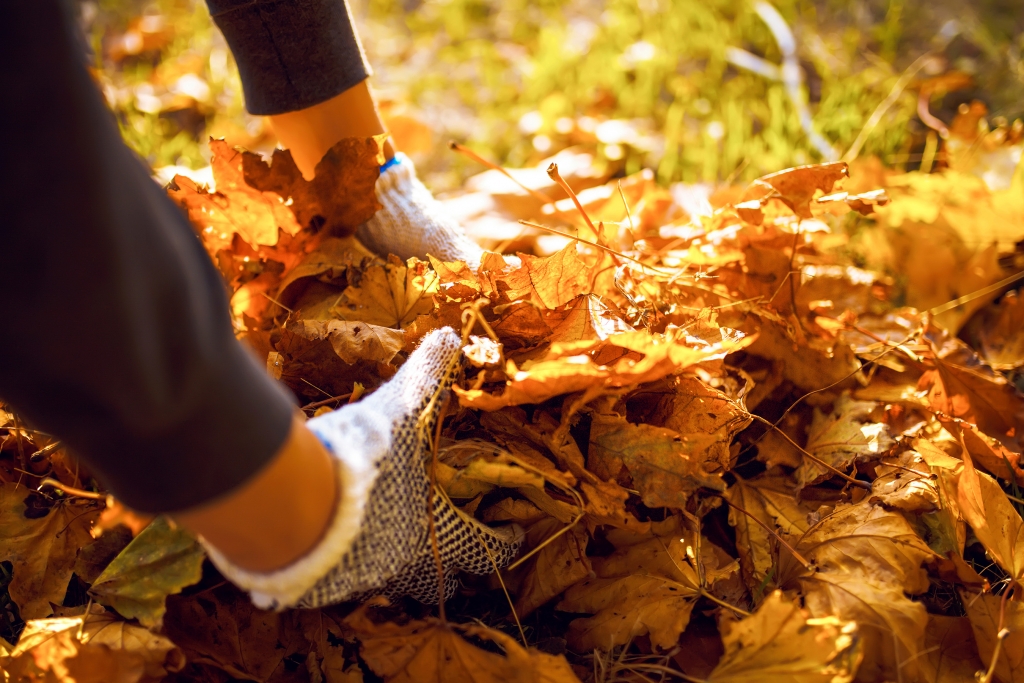 Now that summer is coming to an end, it’s only natural to want to take a break from regular lawn maintenance. However, a little fall lawn and garden care will go a long way toward making your yard healthy and beautiful next spring.
Now that summer is coming to an end, it’s only natural to want to take a break from regular lawn maintenance. However, a little fall lawn and garden care will go a long way toward making your yard healthy and beautiful next spring.
Keeping The Grass Greener
1. Fertilize In The Fall
It’s recommended to fertilize your lawn four times a year, but sometimes we just run out of time. Don’t worry, you can still have a great lawn even if you didn’t do it that many times, as the fall is the ideal time to fertilize.
Choose a 4-1-2 fertilizer (4-Nitrogen, 1-Phosphorous, 2-Potassium) and apply with a fertilizer spreader about three weeks before your final mowing. Fall fertilizing provides energy and nutrients to the grass roots before they go dormant in the winter. That way, when spring arrives, your lawn will have the food it needs for that all-important first burst of growth.
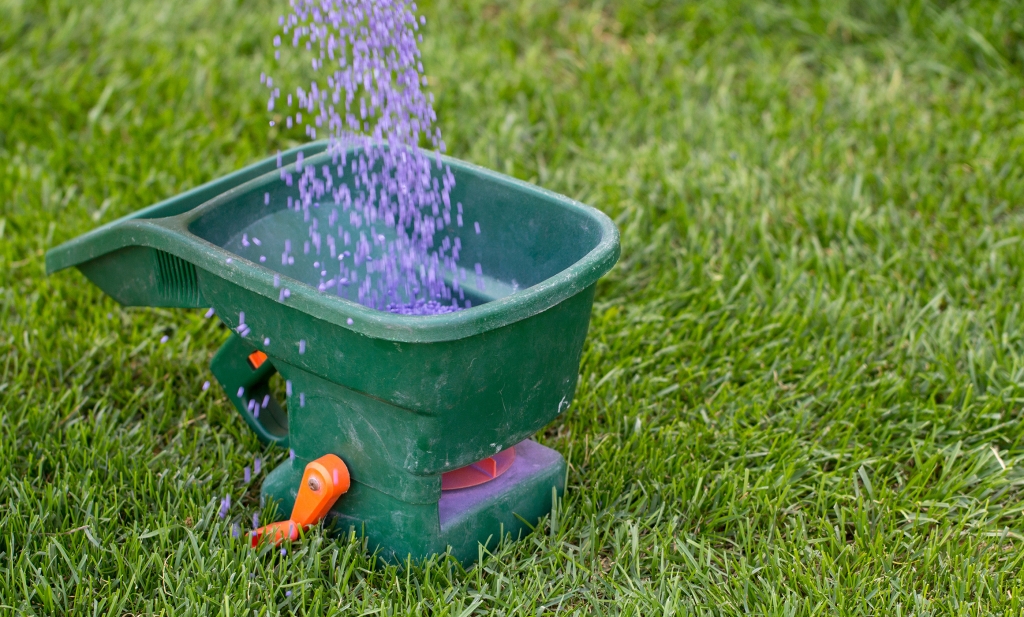
Autumn is the perfect time to fertilize your lawn
2. Just Add Water
Unless we get plenty of rain, your lawn still needs watering in the fall to help it recover from the stress of a hot, dry summer and build up strength for the cold weather to come. If you’ve added fertilizer to your lawn, watering helps the fertilizer dissolve and soak into the ground to the roots where it is needed. So, hold on neighbours, don’t put those sprinklers away just yet!
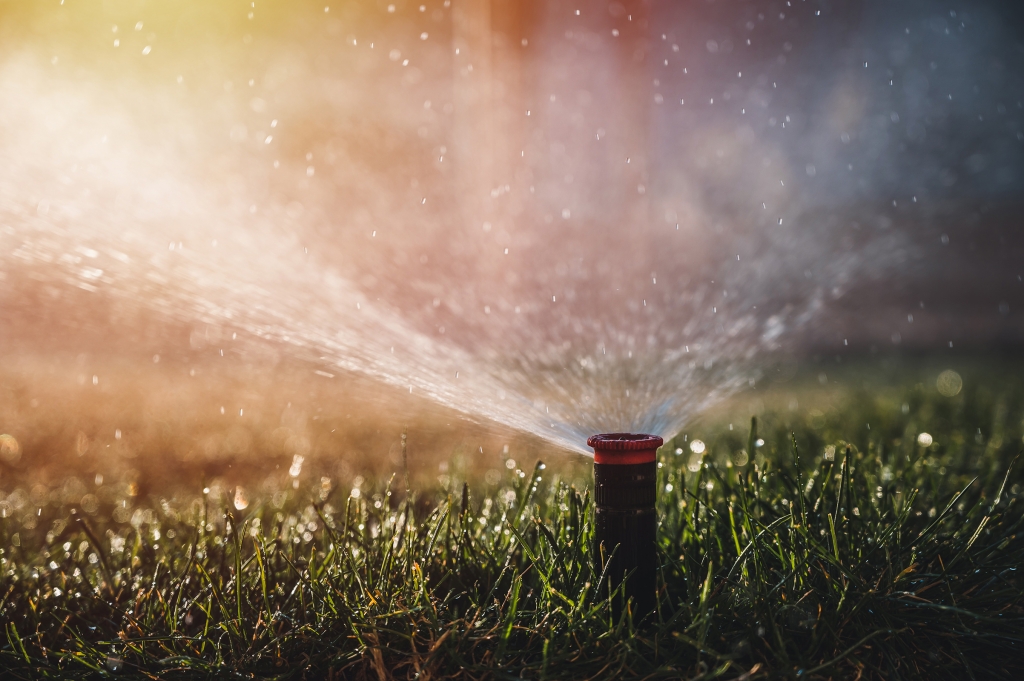
Watering your lawn in the fall is important
3. Don’t Leave Those Leaves
Leaving dead leaves on your lawn becomes heavy and will smother the new grass sprouts struggling to grow in the spring.
If you don’t like raking leaves (and let’s face it, who does?), consider a mulching lawn mower . It may take more than one pass, but a mulching mower will shred dry leaves into flakes that settle into your lawn and gradually decompose into a natural fertilizer. It’s fast, easy and it’s good for your lawn — that sounds like a win/win.
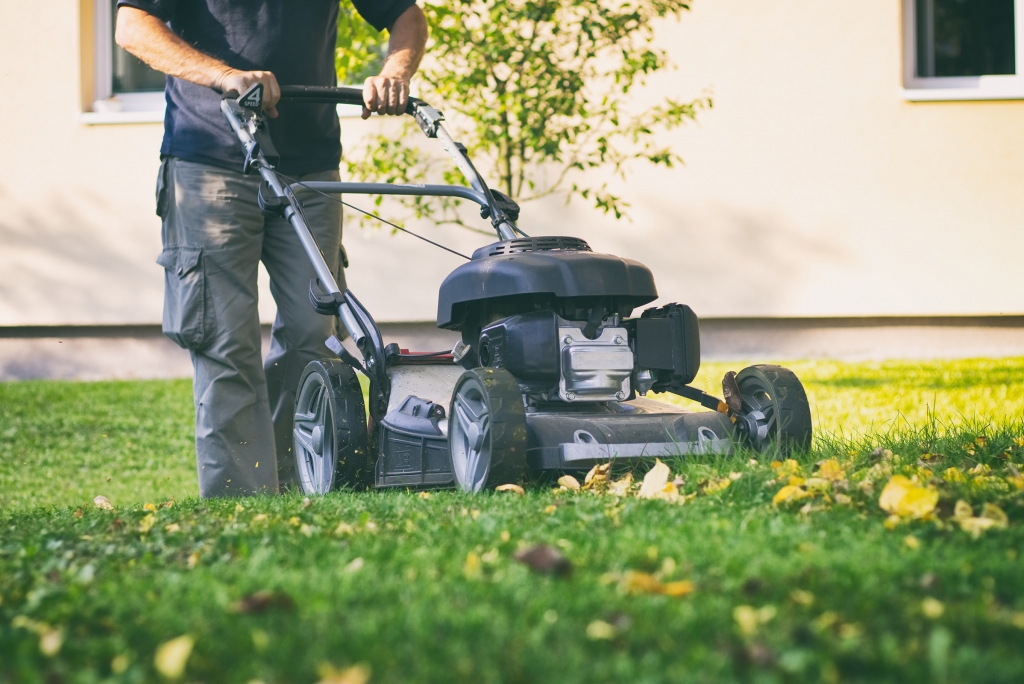
Mulching lawnmower is a great way to keep up with the leaves
4. Keep It Short And Sweet
Normally, it’s recommended to keep your lawn relatively long for optimal health, somewhere between 2.5” and 3”. However, for that final cutting just before the snow flies, cut it shorter, to around 1.5” or 2”. This will lessen the chances of snow mold forming and avoid long blades of grass laying down to become matted and restricting the new growth in the spring.
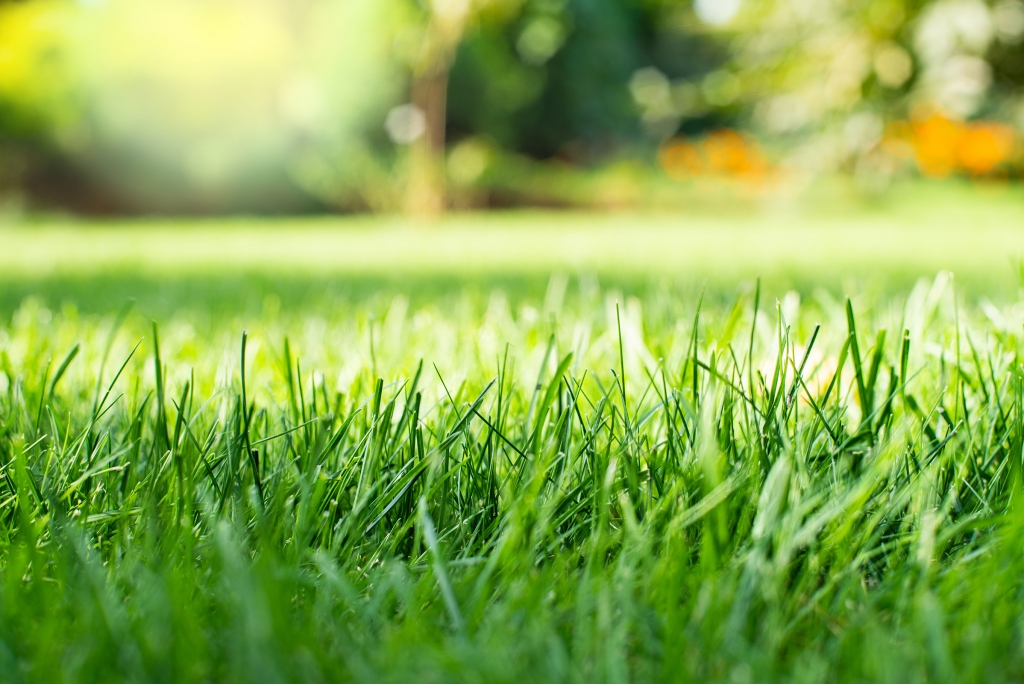
Keep your grass cut short in the fall.
5. Reseed In The Cooler Weather.
If your lawn has some bald spots that need a little TLC, the fall is an ideal time to spread new seed. It is always difficult for seeds to survive in the hottest days of summer, but they will love the cooler, damper fall weather and you’ll be rewarded with a healthy spring lawn.
6. Aerate Your Soil
Aerating, making tiny holes in your lawn by removing plugs of soil, helps loosen the soil and let air, water, and nutrients in to feed your hungry grass. This might be the single best thing you can do for your lawn, and once again, fall is the ideal time to do it.
You can rent aerators at your local hardware store or garden centre, but be sure you get one that actually removes plugs, rather than just poking holes in the soil.
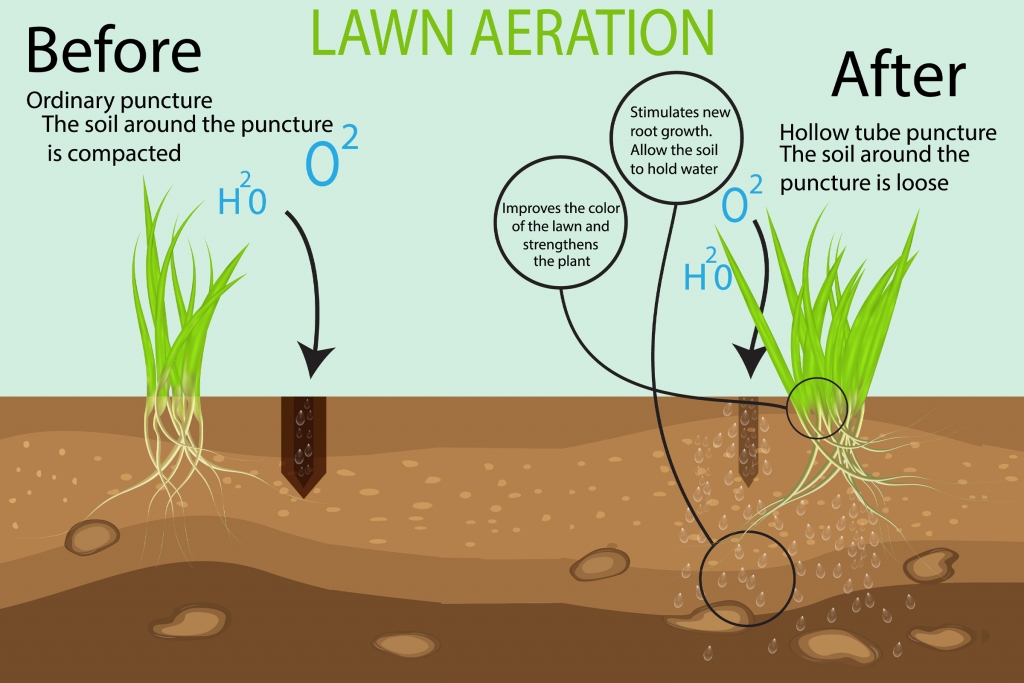
There are many benefits to aerating your lawn.
How Does Your Garden Grow?
1. Prune Your Plants In The Fall
As we look ahead to fall, you may notice your garden looking a little overgrown and bedraggled. Your plants have shifted gears from producing flowers for pollination, to producing seed heads for reproduction. A little judicious deadheading (removing spent flower heads) will make your garden look better and prepare the plants for overwintering. And the best part is, pruning and cutting back in the fall leads to more blooms in the spring.
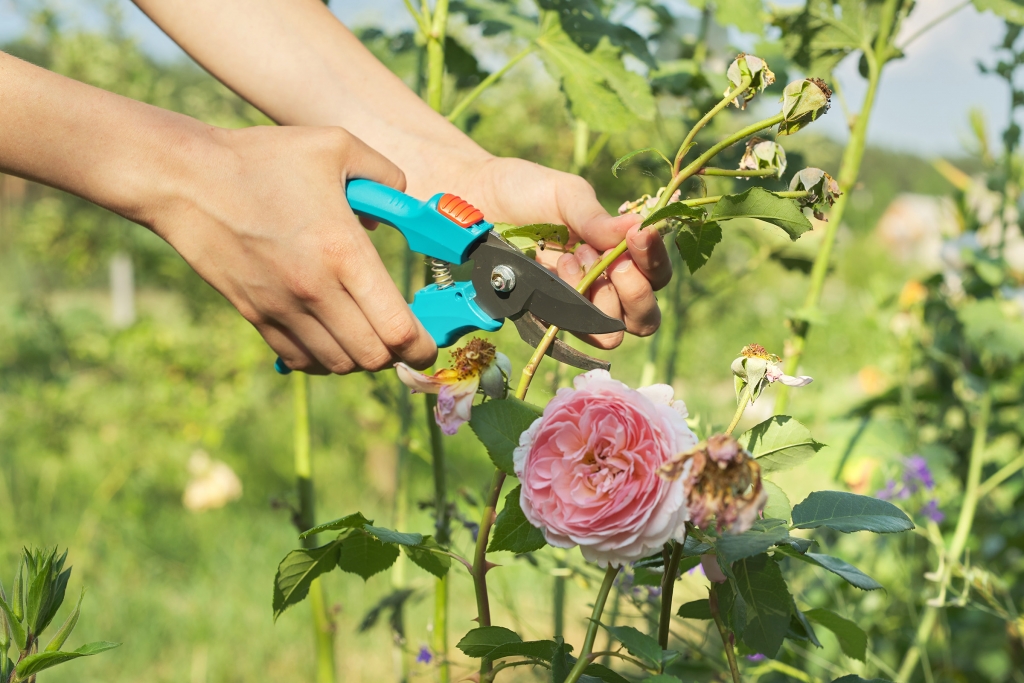
Be sure to prune your plants before they start to freeze.
2. Save Your Tender Bulbs
In our cooler climate, many gardeners treat flowers with tender bulbs, like calla lilies and gladiolus, as annuals, allowing them to die off and re-planting in the spring. Instead, try overwintering your bulbs in a cool place like a basement or garage so they can bloom again in the spring.
You can dig the bulbs up from your garden to store them, but the simplest method is to plant the bulbs in containers, and move the whole container to the storage area. Then, give them a little water occasionally just to keep the soil from totally drying out. In the spring, bring the containers back outside and let Mother Nature do her thing.
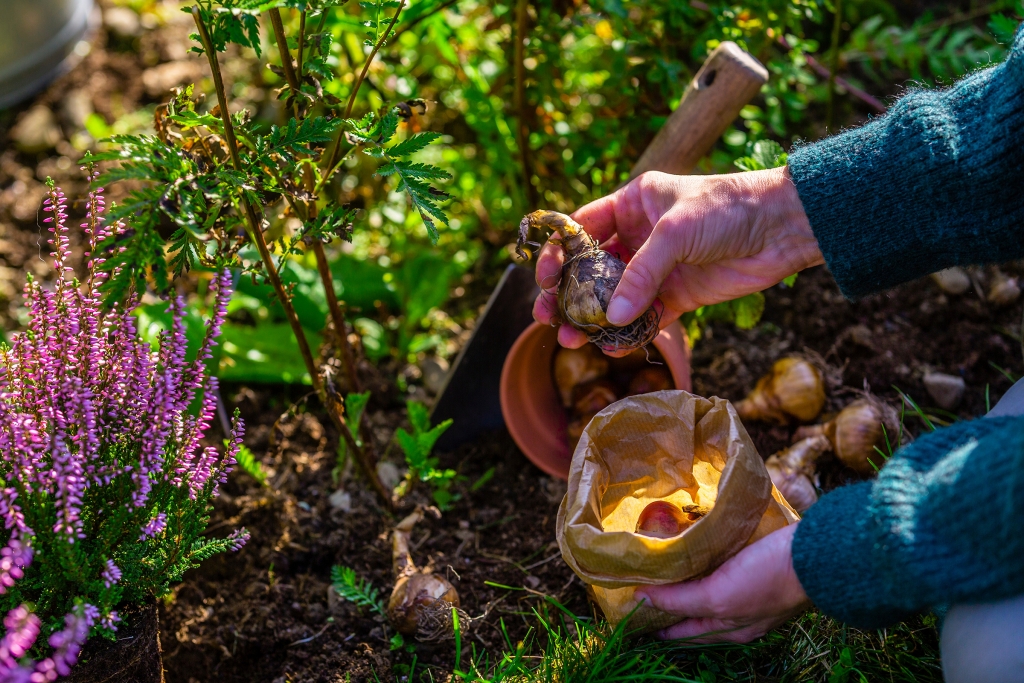
Save those bulbs for spring.
3. Add Compost To Your Garden
The soil is the single most important aspect of a healthy garden. Without healthy soil you simply can’t grow healthy plants. Adding compost to your garden in the fall is an essential aspect of garden maintenance. Unlike faster-acting chemical fertilizers, nutrient-rich organic compost takes time to improve the soil. Adding it in the fall allows it to break down over the winter letting the nutrients slowly work their way into the soil. This is where earthworms and other soil macro-organisms are a gardener’s best friends, working tirelessly to turn that compost into rich soil. For more tips on composting check out our earlier blog.
4. Out With The Old
Clean up your garden to properly put it to bed for the winter. This means removing dead leaves, spent vegetable plants and cleaning up any weeds, hopefully before they go to seed and spread even more.
If you find any plants that are diseased, remove and discard them. Never add them to your fertilizer or you could spread the diseases to the rest of the garden. Another reason for removing old and overgrown plants, weeds and leaves is to avoid creating potential homes for small rodents and other pests.
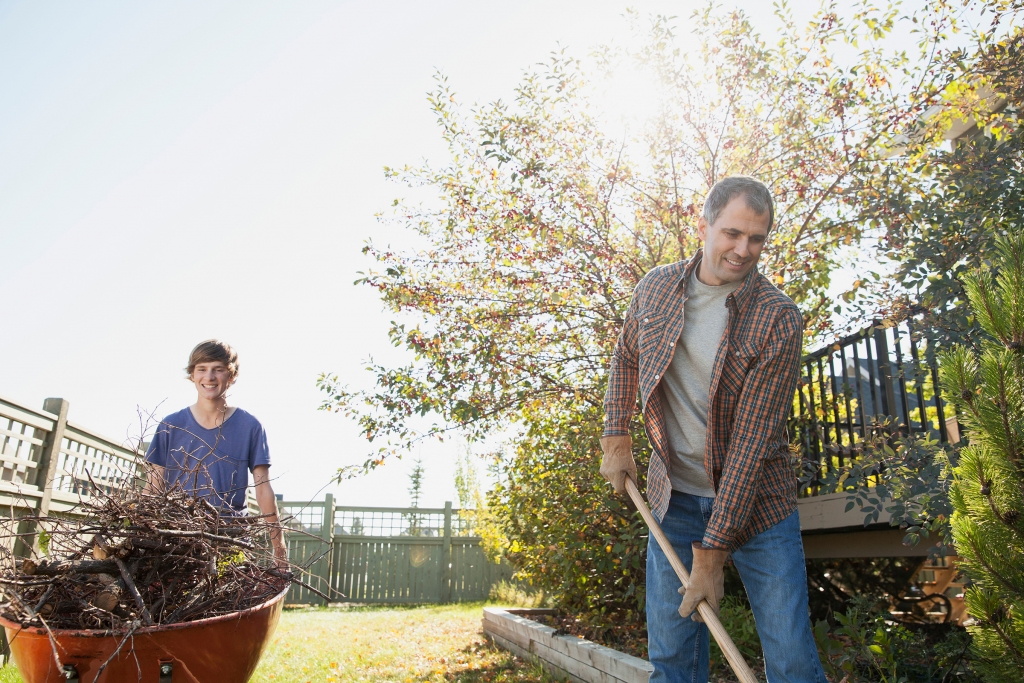
Get a head start on spring gardening now.
And there you have it. A little preventative fall maintenance will go a long way toward creating a thriving and easy to maintain spring lawn and garden.
